For those who travel to Tōkyō for the first time, they will probably be confused about where to go because Tōkyō has so many attractive attractions.
In this article, I have compiled the “Top 20 tourist attractions in Tōkyō”, including standard destinations such as Tōkyō station, Tōkyō tower to newly updated destinations such as teamLab Borderless Digital Art Museum.
Please refer to and save your favorite places for convenience when planning your trip to Tokyo.
- Tōkyō Imperial Palace
- Meiji Jingū Shrine
- Sensōji Temple
- Tōkyō Tower
- Tokyo Skytree Tower
- Tōkyō Station
- Toyosu Market
- Shibuya Scramble Intersection
- Kabukicho – The red-light district of Shinjuku
- Takeshita Street in Harajuku
- Ueno Zoo
- Ueno Ameyoko Shopping Street
- Ginza
- Kabukiza
- Miraikan Museum
- Maxell Aqua Park Shinagawa
- Ghibli Museum
- teamLab Borderless Digital Art Museum
- Edo-Tokyo Open-Air Architectural Museum
- Tokyo Disneyland
Tōkyō Imperial Palace
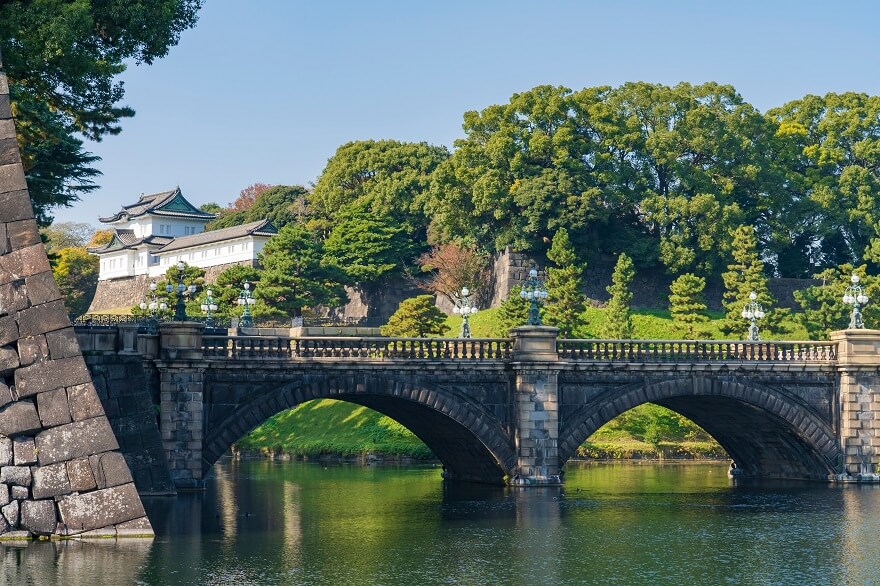
Tōkyō Imperial Palace has a long history and was once used as the residence of the Tokugawa Shogunate (formerly Edo Castle).
Today, Tōkyō Imperial Palace is the residence of the Emperor and Empress, and is also the headquarters of the Japanese Imperial Household Agency.
Surrounded by moats and vast gardens, this place not only impresses with its ancient design but also possesses a harmonious natural landscape and fresh, pleasant atmosphere.
If you want to enjoy nature walks while exploring historical sites, Tōkyō Imperial Palace is a recommended place to visit.
Website: https://sankan.kunaicho.go.jp/english/guide/koukyo.html
Meiji Jingū Shrine
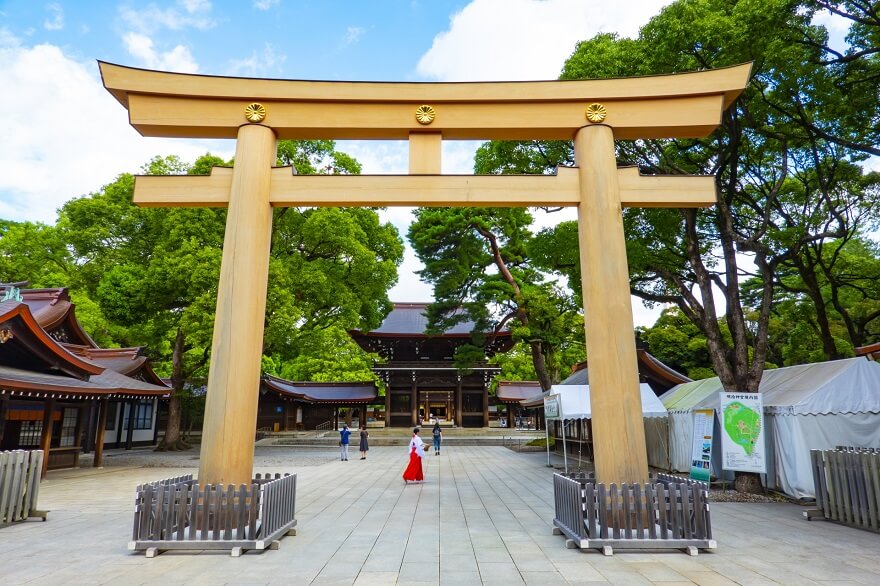
Meiji Jingū Shrine is dedicated to Emperor Meiji, the founder of modern Japan, and his wife Empress Shōken.
With about 3 million people visiting at the beginning of the year, Meiji Jingū Temple is proud to be the shrine with the largest number of people attending New Year ceremonies in Japan.
Besides many sacred destinations, the appeal of Meiji Jingū Temple also lies in its campus covered with more than 100,000 trees, giving you the feeling of being in a forest.
Meiji Jingū Shrine is a recommended place for those of you who want to enjoy nature while in the city and get a lot of energy.
Website: https://www.meijijingu.or.jp/en/
Sensōji Temple
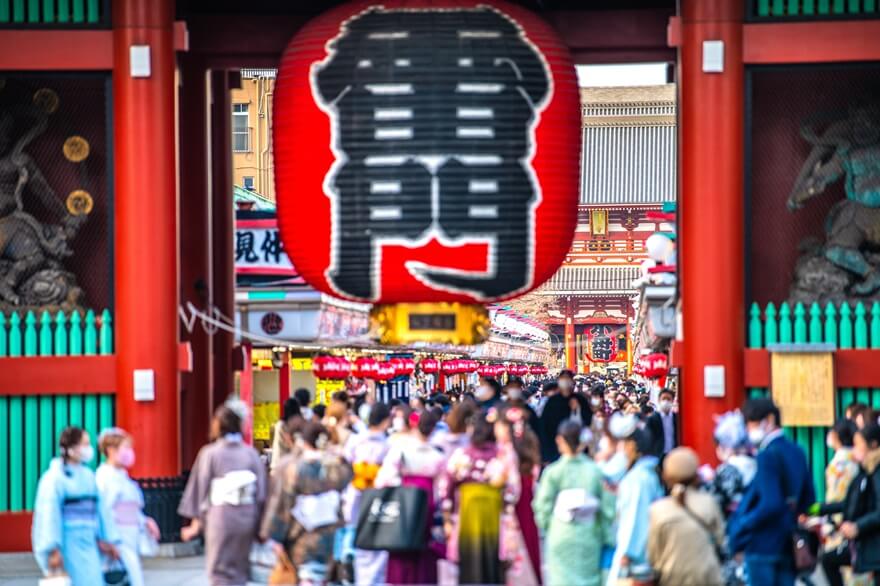
Sensōji Temple, is the oldest temple in Tōkyō, built in 628.
With 30 million people visiting each year, it is no exaggeration to say that Sensōji Temple is one of Japan’s most iconic tourist destinations.
When it comes to Sensōji Temple, the most famous is the Kaminari-mon Gate.
The red Kaminarimon Gate, in the middle of which hangs a giant lantern weighing nearly 700 kilograms, has long become a familiar symbol of Asakusa, as well as a famous photo spot for tourists.
For those who want to learn about Japanese Buddhism, and those who want to take beautiful photos when traveling to Tōkyō, Sensōji Temple is an ideal place to visit.
The advice is to rent a Kimono to wear when visiting Sensōji Temple, ensuring you will take many beautiful photos to show off to your friends.
Website: https://www.senso-ji.jp/english/
Tōkyō Tower
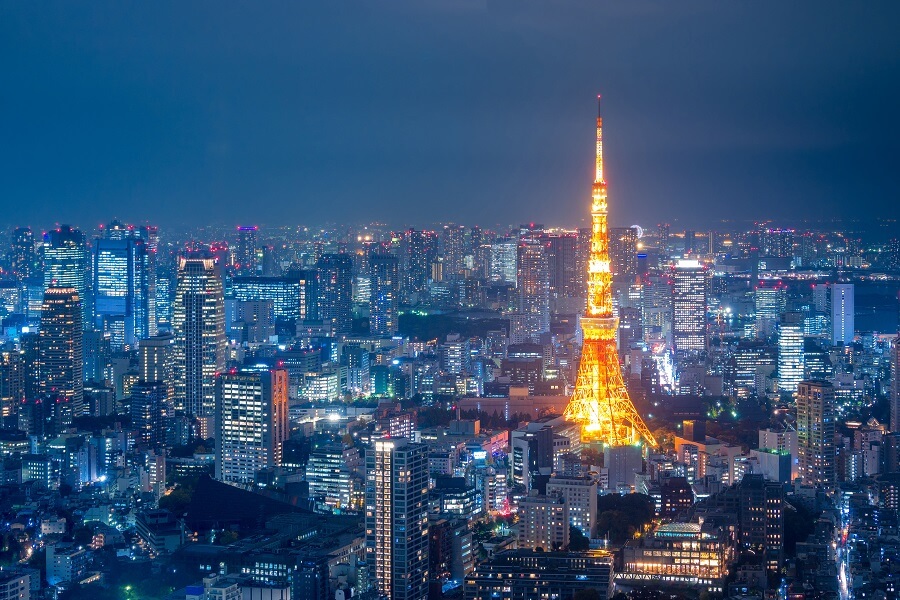
Tōkyō Tower has become a symbol of Tōkyō since its opening in 1958 and remains a popular tourist destination. Although Tōkyō Tower can be seen from many different places in Tōkyō, many tourists still want to visit it to fully experience traveling in Tōkyō.
Tōkyō Tower is not only beautiful during the day but also at night. The atmosphere becomes romantic as the entire tower is brightly lit, making Tōkyō Tower perfect for a date.
If you are traveling to Tōkyō with your lover, don’t forget to stop by Tōkyō Tower to create more memorable memories!
Website: https://www.tokyotower.co.jp/en/
Tokyo Skytree Tower
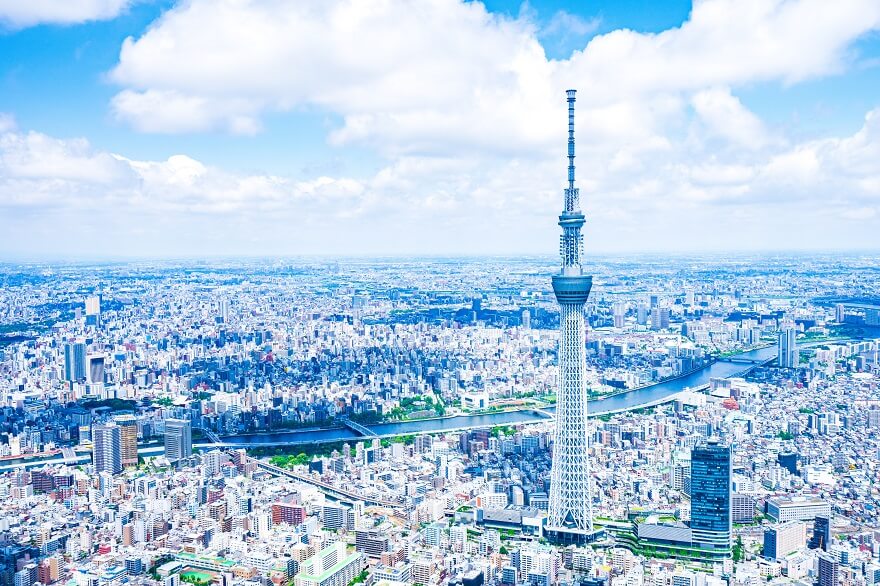
Tōkyō Skytree Tower is a new symbol of Tōkyō and a destination not to be missed when traveling to Tōkyō.
At 634 meters high, it is the tallest tower in Japan and also the tallest free-standing TV tower in the world.
At the observation deck at the top of the tower, you can enjoy breathtaking views of the city and even see Mount Fuji in the distance.
At the foot of the tower, there is an aquarium, planetarium and Tokyo Solamachi, where you can shop and enjoy cuisine.
Tōkyō Skytree Tower is a recommended destination for those who want to experience all the beauty and excitement of Tōkyō from the highest perspective.
Website: https://www.tokyo-skytree.jp/en/
Tōkyō Station

Tōkyō Station is Japan’s transportation gateway and has become a symbol of Tōkyō for more than 100 years.
Tōkyō Station’s beautiful red brick Marunouchi Building has long been a popular photo spot for tourists.
There are commercial establishments inside the station, so this is also where you can shop and enjoy cuisine. With a variety of specialties from all over the country, you can easily find many delicious dishes.
There are also many limited products sold only at Tōkyō Station, so if you are looking to buy unique souvenirs, Tōkyō Station is a place you should visit when traveling to Tōkyō.
Toyosu Market
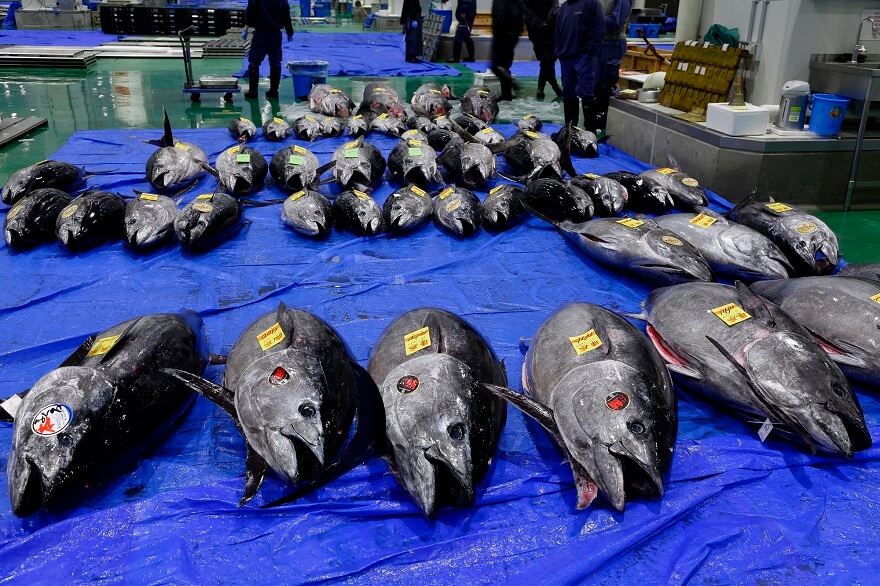
Toyosu Market is the world’s largest wholesale seafood market, with about 1,400 to 1,700 tons of seafood sold every day.
Toyosu Market is famous for its early morning tuna auctions. From the visitor area, you can follow the auction proceedings and listen to the conversation between sellers and buyers through loudspeakers.
The attraction of Toyosu market is also in the restaurant area, known as a “paradise” for gourmets. Using fresh seafood, the Sushi restaurants inside the market will definitely make you satisfied.
If you want to enjoy fresh Sushi while traveling to Tōkyō, stop by Toyosu market.
Website: https://www.toyosu-market.or.jp/en/
Shibuya Scramble Intersection
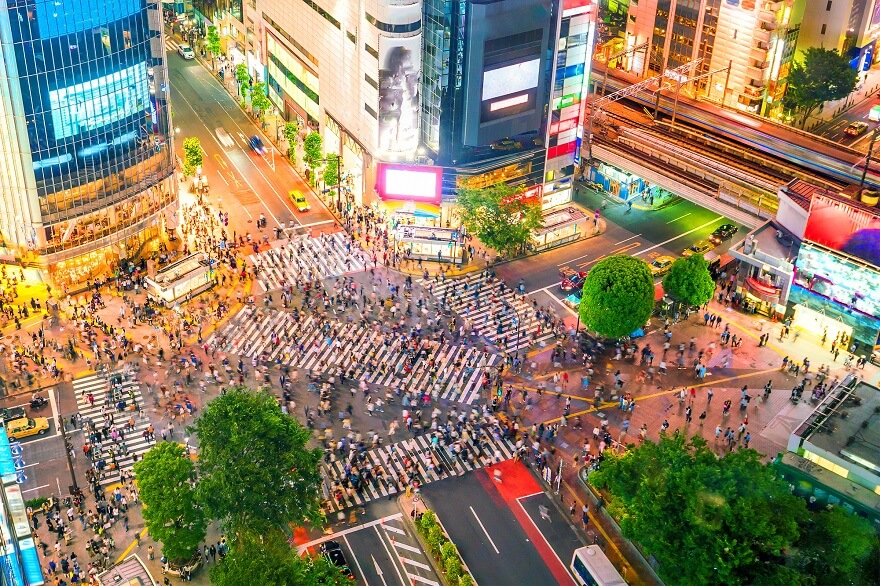
The Shibuya Scramble Intersection is located right outside the Hachikō exit (where the statue of the loyal dog Hachikō is located) of JR Shibuya Station.
Known as one of the largest intersections in the world, Shibuya Scramble Intersection has about 500,000 people passing through every day, and about 3,000 people pass each time the light turns green.
The sight of thousands of people passing through at the same time without causing collisions has attracted the attention of many international tourists.
If you want to experience the excitement of Tōkyō, head to Shibuya Scramble Intersection.
Kabukicho – The red-light district of Shinjuku
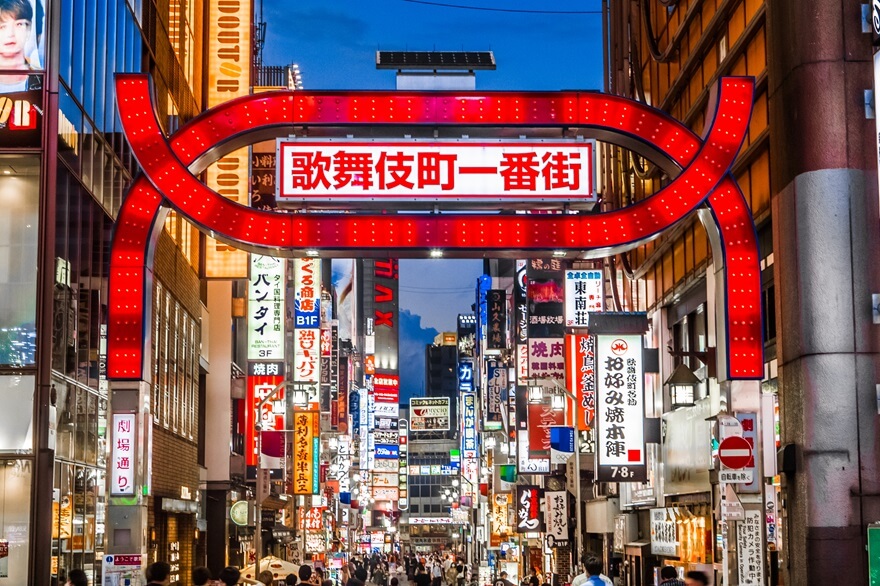
Kabukichō in Shinjuku is also known as “The town that never sleeps”, and is home to many clubs, love hotels and restaurants.
If you want to experience the vibrant nightlife atmosphere in Tōkyō, there is no better place than Kabukichō.
Note that although it is one of the destinations not to be missed when visiting Tōkyō, Kabukichō is also quite complicated, so avoid deserted places or avoid answering if approached by strangers.
Takeshita Street in Harajuku
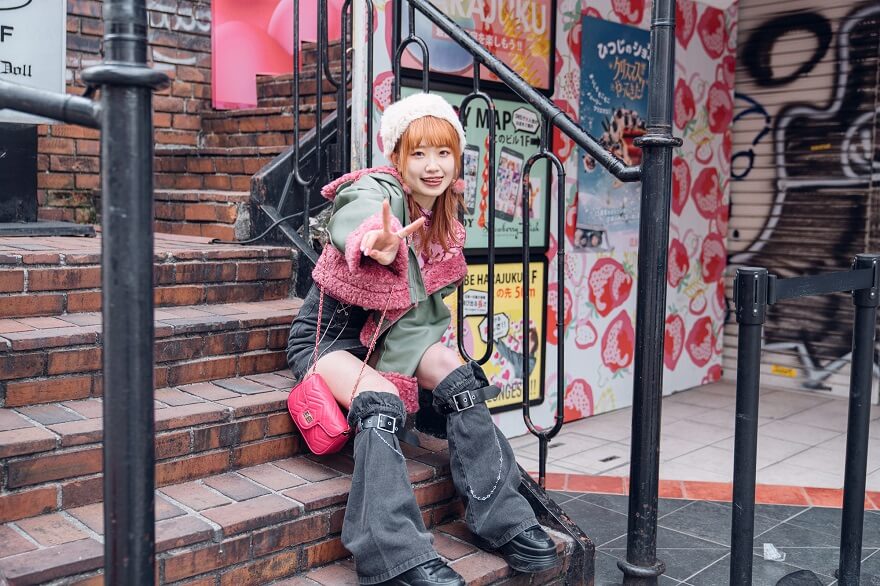
Takeshita Street in Harajuku is considered the center of Kawaii culture and is the place to keep up with the latest trends in Japan.
The approximately 350m long street is filled with shops aimed at young people, including trendy fashion brands, colorful food and photo booths.
For those who love fashion or those who want to learn about Japanese youth, Takeshita Street is an ideal destination when traveling to Tōkyō.
Website: https://www.takeshita-street.com/
Ueno Zoo

Ueno Zoo was the first zoo in Japan, opened in 1882.
Besides the famous Pandas, Ueno Zoo also cares for more than 3,000 animals of 300 different species around the world.
In particular, this is the only place in Japan where rare animals such as Aye-Aye, Fossa and lemur native to Madagascar can be seen.
If you’re an animal lover, why not spend a few hours on your Tōkyō tour to visit Ueno Zoo?
Website: https://www.tokyo-zoo.net/english/ueno/index.html
Ueno Ameyoko Shopping Street
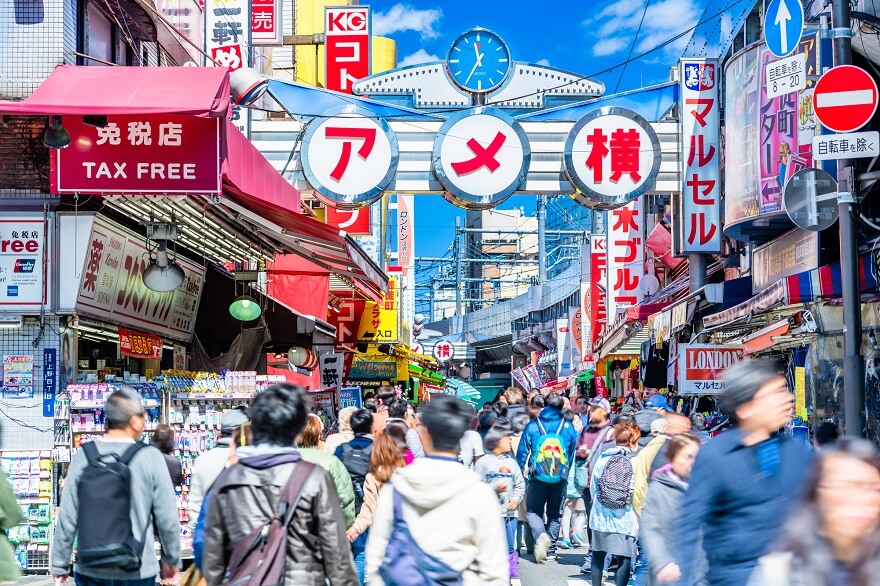
Ueno Ameyoko Shopping Street is one of the most famous shopping streets in Japan.
The street is only about 500m long but has more than 400 stores with all kinds of products, from candy, fresh food to bags, shoes, and cosmetics. A wide variety of items at surprisingly low prices, and there are also shops where you can bargain – a rarity in Tōkyō.
If you want to shop cheaply and enjoy street food, Ueno Ameyoko shopping street is a destination not to be missed when coming to Tōkyō.
Website: https://www.ameyoko.net/
Ginza
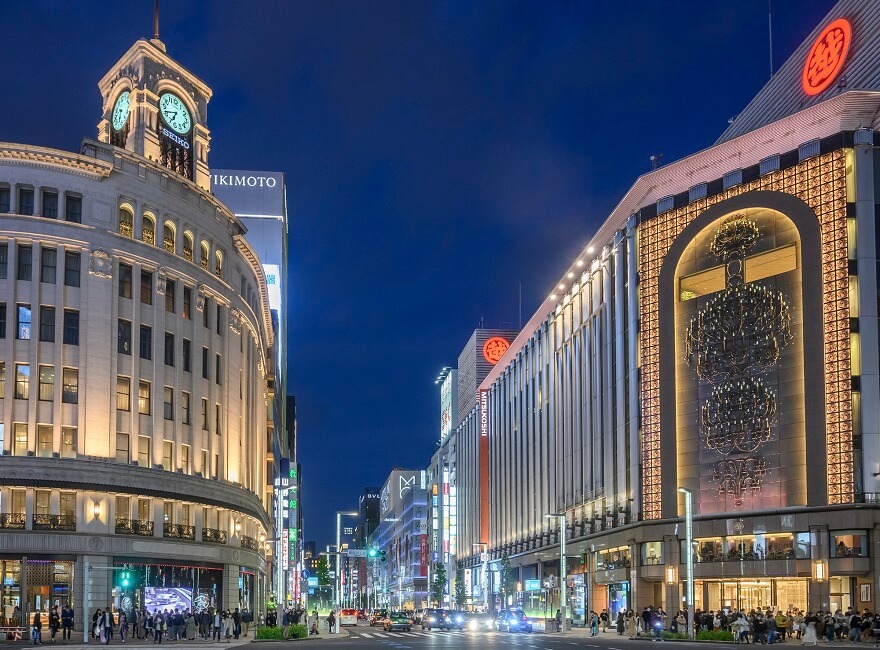
Ginza is one of Japan’s top luxury neighborhoods, home to many high-end brands from around the world.
Ginza is also home to many Michelin-starred restaurants – a prestigious award in the world culinary industry.
If you want to experience luxury shopping or enjoy high-class food when traveling to Tōkyō , you should visit Ginza.
Kabukiza
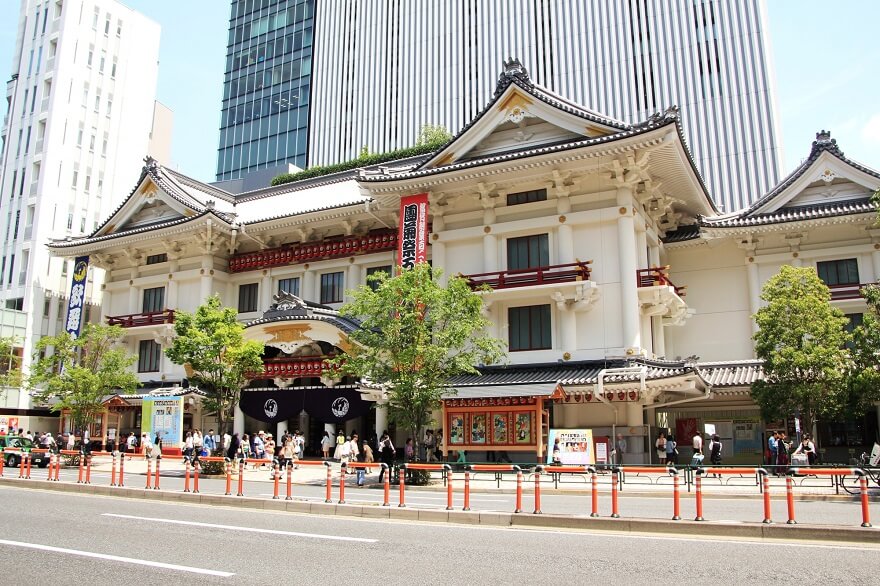
Kabukiza is the best destination to learn about the traditional Japanese art of Kabuki. This place is not only a theater, but also a complex with many different amenities such as gallery, garden and shopping area.
With performances almost every day, Kabukiza allows you to easily buy tickets to enjoy Kabuki. If you just want to learn a little about Kabuki, visit the “Kabukiza Gallery” on the 5th floor, which displays costumes and props used in performances.
Kabukiza is a recommended destination for those who love Japanese culture, especially Kabuki.
Website: https://www.kabukiweb.net/theatres/kabukiza/kabukiza-information/
Miraikan Museum
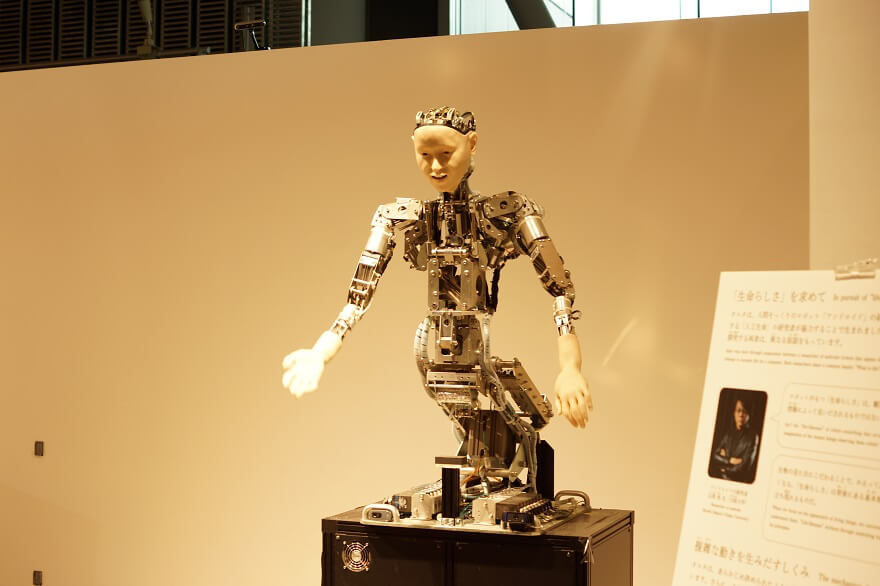
The National Museum of Emerging Science and Innovation, commonly known as “Miraikan”, is a science museum where you can learn about the latest technology through various exhibits.
The permanent exhibition includes three themes: “Discover your Earth”, “Creat your Future” and “Explore the frontiers”, each offering opportunities for deeper understanding of different scientific fields .
Miraikan is the place for anyone who wants to experience science in an up-close and enjoyable way.
If you travel to Tōkyō with family or friends, take the time to stop by Miraikan to have fun with science.
Website: https://www.miraikan.jst.go.jp/en/
Maxell Aqua Park Shinagawa
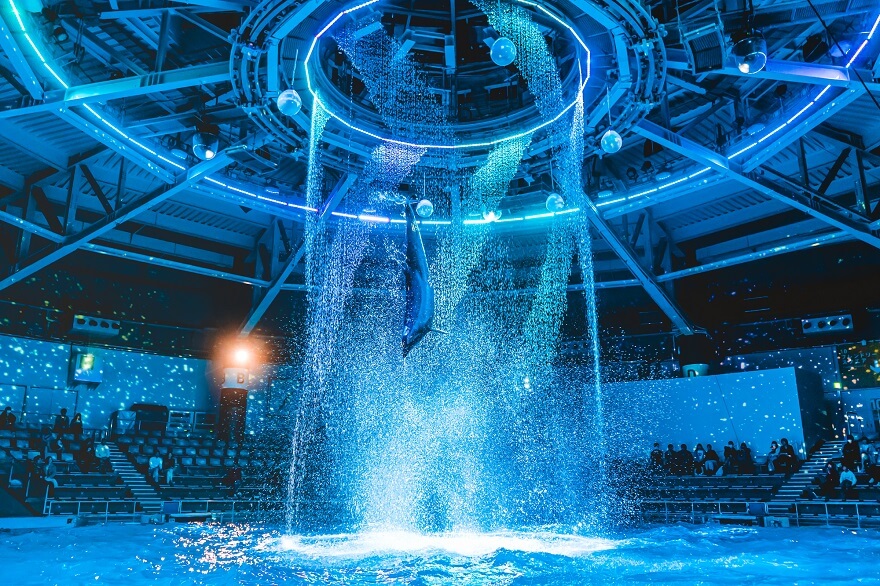
Maxell Aqua Park Shinagawa is a modern aquarium located in the city center, famous for its exhibits that combine sound, light, images and living creatures.
Besides the colorful jellyfish tank “Jellyfish Rumble” or the “Wonder Tube” that makes you feel like you are walking under the sea, Maxell Aqua Park Shinagawa is especially famous for its dolphin performance.
The stadium has seating surrounding a large 25-meter-diameter swimming pool, allowing you to enjoy the impressive performance from every angle.
If you like marine life, especially dolphins, Maxell Aqua Park Shinagawa is a destination you should visit when traveling to Tōkyō.
Website: https://www.aqua-park.jp/en/aqua/index.html
Ghibli Museum
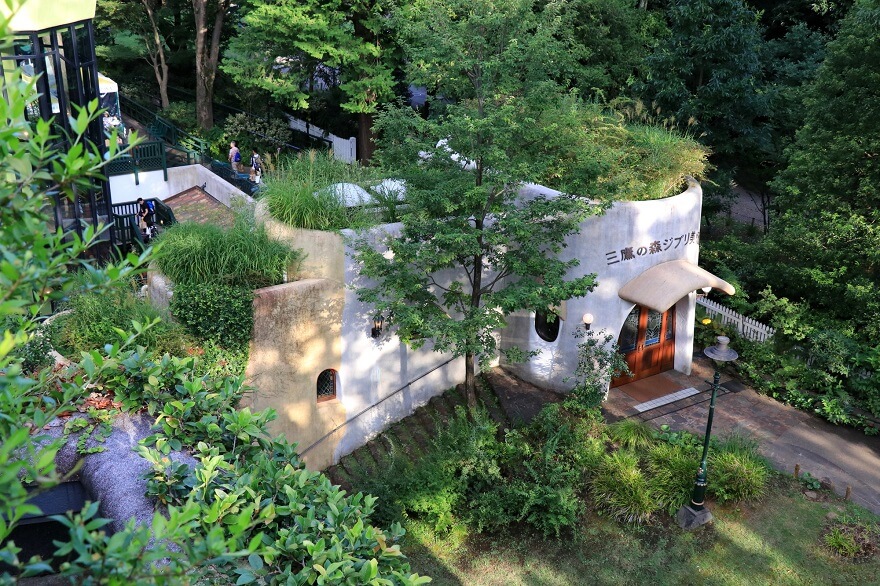
The Ghibli Museum located in Mitaka City is a place where you can experience the world of Studio Ghibli – the studio that produced such animated masterpieces as “My Neighbor Totoro”, “Spirited Away” and “Princess Mononoke”.
The attraction of the Ghibli Museum lies not only in the vivid scenery like in the movies, but also in detailed exhibitions about the filmmaking process, from character and background design to the drawing and animation process.
If you are a fan of Japanese animation, especially Studio Ghibli’s animation, 100% Ghibli museum is definitely a paradise for you.
Website: https://www.ghibli-museum.jp/en/
teamLab Borderless Digital Art Museum
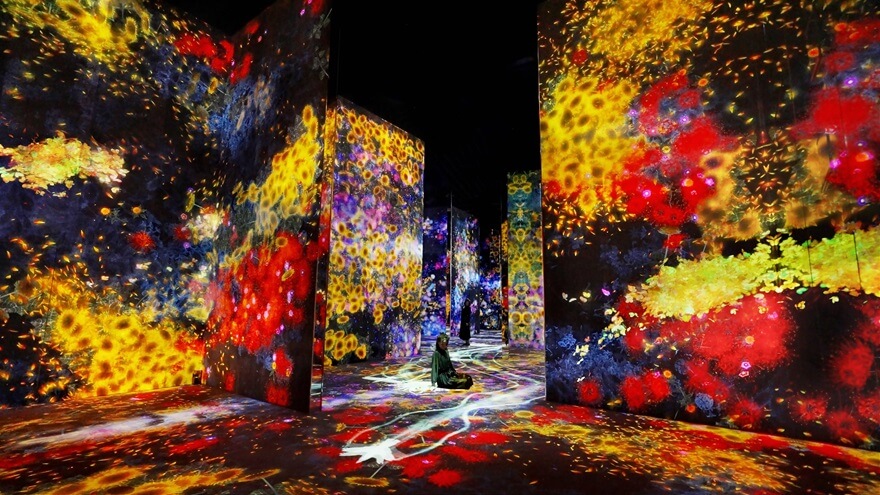
TeamLab Borderless Digital Art Museum is a hugely popular attraction in Tōkyō. This is where you can immerse yourself in complex three-dimensional space and enjoy art through all five senses.
The attraction of teamLab Borderless is that the artworks will change depending on the presence and actions of the viewer. When you touch the image of a waterfall, the water will flow away from your fingers, or when you stand still, flowers will bloom near your feet.
If you want to find a great spot to take perfect photos, teamLab Borderless Digital Art Museum is for you.
Website: https://www.teamlab.art/
Edo-Tokyo Open-Air Architectural Museum
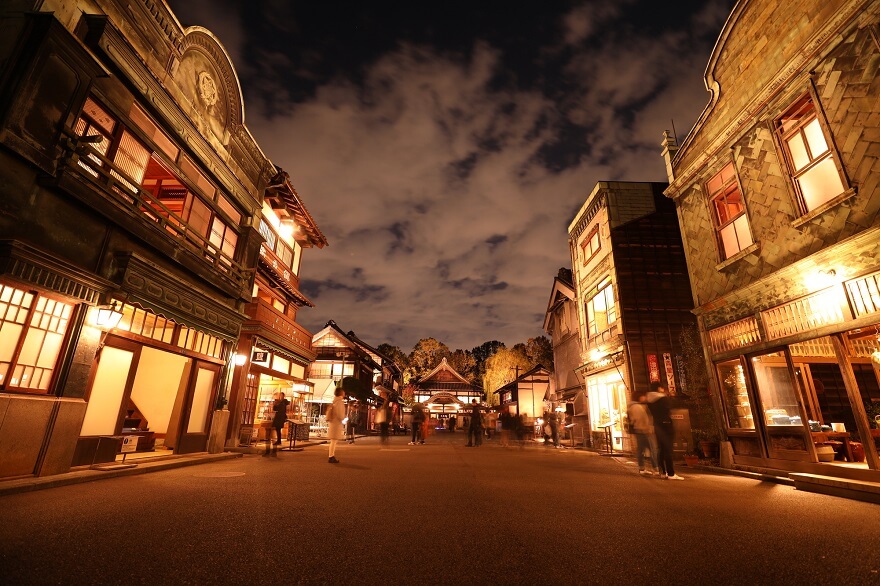
Edo-Tokyo Open-Air Architectural Museum is a place that restores and displays architectural works of historical value from the Edo period (1603~1868) to the early Shōwa period (1926~1989).
The architectural complex includes folk houses, pubs, public baths… all are meticulously and accurately recreated.
Not only stopping at looking from the outside, you can also step inside to experience the living space of ancient people.
Edo-Tokyo Open-Air Architectural Museum is an ideal destination for those interested in traditional architecture and wishing to gain a deeper understanding of Japanese history and culture.
Website: https://www.tatemonoen.jp/english/
Tokyo Disneyland
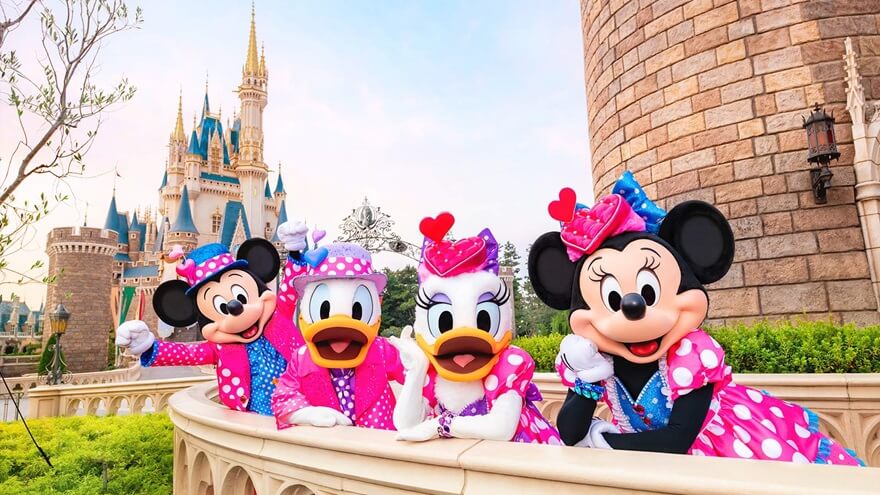
Tokyo Disneyland is a large amusement park, famous for its slogan “The Kingdom of Dreams and Magic”. Opened in 1983, Tokyo Disneyland was the first Disney theme park outside the United States and celebrated its 40th anniversary in 2023.
The special feature of Tokyo Disneyland is the variety of rides and parades, taking you to a dream world with lights and music.
Located only about 15 minutes by train from Tōkyō station, Tokyo Disneyland is a great destination for those traveling to Tōkyō with their families.

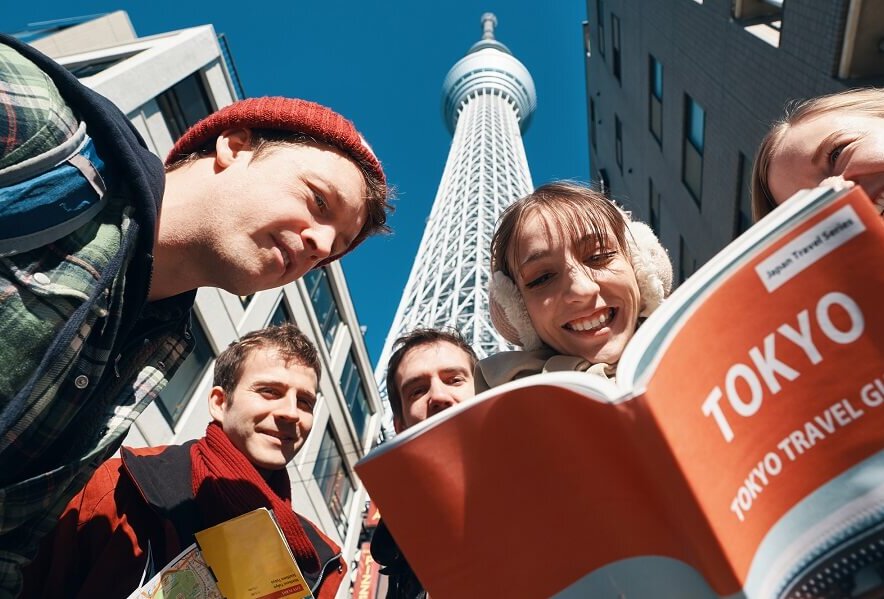
Comment